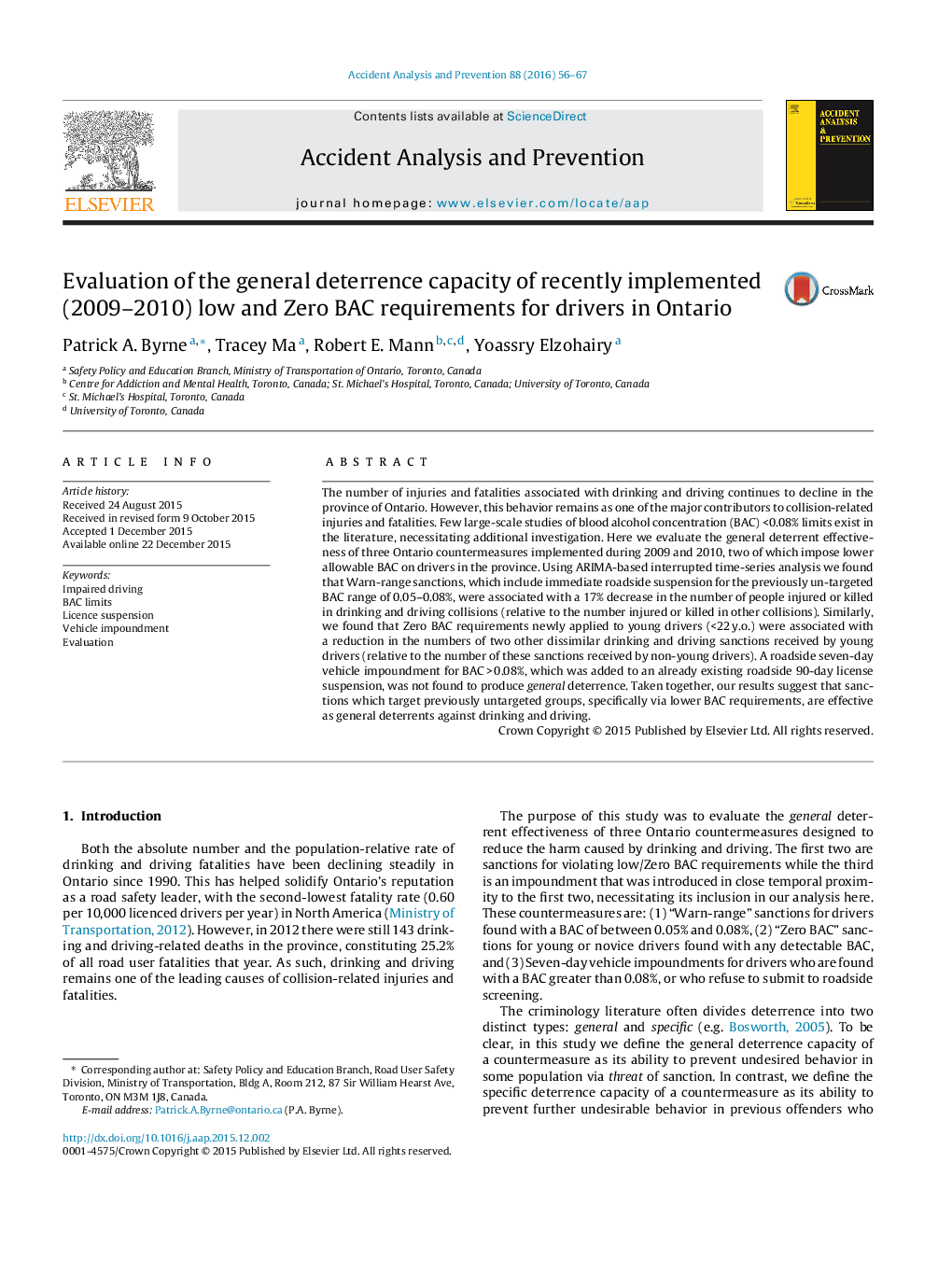| Article ID | Journal | Published Year | Pages | File Type |
|---|---|---|---|---|
| 6965357 | Accident Analysis & Prevention | 2016 | 12 Pages |
Abstract
The number of injuries and fatalities associated with drinking and driving continues to decline in the province of Ontario. However, this behavior remains as one of the major contributors to collision-related injuries and fatalities. Few large-scale studies of blood alcohol concentration (BAC) <0.08% limits exist in the literature, necessitating additional investigation. Here we evaluate the general deterrent effectiveness of three Ontario countermeasures implemented during 2009 and 2010, two of which impose lower allowable BAC on drivers in the province. Using ARIMA-based interrupted time-series analysis we found that Warn-range sanctions, which include immediate roadside suspension for the previously un-targeted BAC range of 0.05-0.08%, were associated with a 17% decrease in the number of people injured or killed in drinking and driving collisions (relative to the number injured or killed in other collisions). Similarly, we found that Zero BAC requirements newly applied to young drivers (<22Â y.o.) were associated with a reduction in the numbers of two other dissimilar drinking and driving sanctions received by young drivers (relative to the number of these sanctions received by non-young drivers). A roadside seven-day vehicle impoundment for BACÂ >Â 0.08%, which was added to an already existing roadside 90-day license suspension, was not found to produce general deterrence. Taken together, our results suggest that sanctions which target previously untargeted groups, specifically via lower BAC requirements, are effective as general deterrents against drinking and driving.
Related Topics
Physical Sciences and Engineering
Chemical Engineering
Chemical Health and Safety
Authors
Patrick A. Byrne, Tracey Ma, Robert E. Mann, Yoassry Elzohairy,
